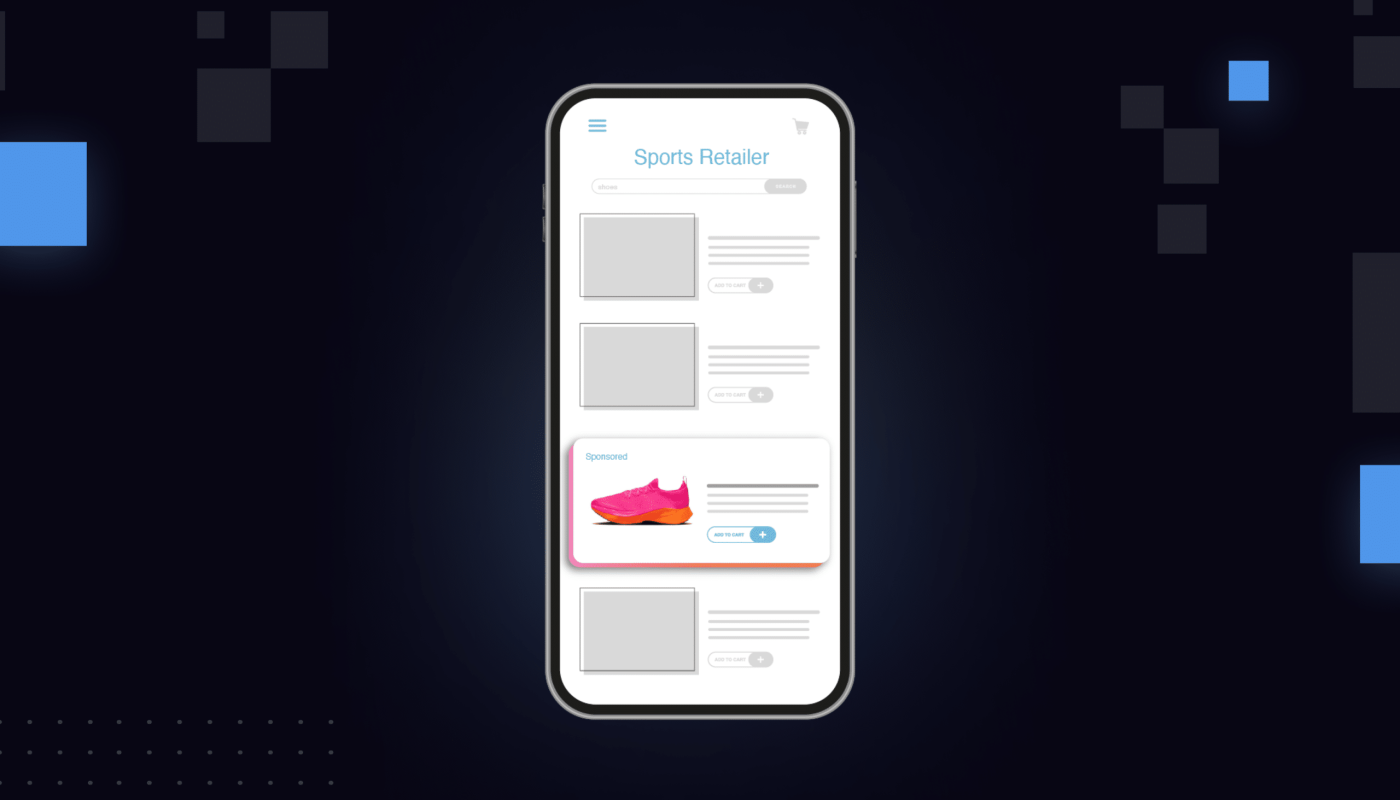What is Amazon Retail Ad Service? Thanks to this new service, brands can now set their Sponsored Products ads to run on a whole new universe of e-commerce sites.
It’s all thanks to Amazon’s new feature, Amazon Retail Ad Service.
At the simplest level, Amazon Retail Ad Service is a B2B software product for big brands and e-commerce platforms. It essentially lets them set up their own retail media operation, using Amazon’s technology.
Interesting in general—but for brands that sell on Amazon, there are big opportunities here, too.
When you create a new campaign and choose a Sponsored Products ad, you can now select a button that says “Advertise products across retailers,” which authorizes your ads to show up across participating platforms.
Suddenly, you can run ads directly from your Amazon account across dozens of new e-commerce sites.
It’s important to note that you can also use Amazon Retail Ad Service even if you don’t sell your products on Amazon. As long as your product appears in the store of a participating retailer, then you can use the platform.
But for the sake of this blog, we’re going to focus on what this all means for brands that do sell on Amazon. Basically: If you’re smart, you can use this new feature to expand the reach of your ads.
What is Amazon Retail Ad Service?
Amazon Retail Ad Service is, first and foremost, an advertising software for retailers. It’s a rival to Criteo.
E-commerce sites want to sell ads to brands whose products they stock. But building up a retail media network of your own can be difficult and costly.
Outsourcing that labor to Amazon’s technology has its appeal for mid-sized retailers and platforms especially.
Through Amazon Retail Ad Service, the retailers get to set their own rules about ads. They pick the ad formats they want available, the spots on the website where the ads will be shown, and how many ads are on display.
The retailers also determine what the ads will do: direct shoppers to a product page or to an add to cart.
Right now, Amazon only has a few platforms that have already committed to running these ads, including the vitamin marketplace iHerb, the rug brand Oriental Trading Company, and the online Asian grocer Weee!.
When shoppers click on the ad, they complete the purchase in the retailer’s online store.
If you sell hoisin sauce and your Sponsored Products ad shows up on Weee!, for instance, shoppers will buy your sauce directly from Weee!. They won’t get directed back to Amazon to make the purchase.
It’s important to note that your products will only be eligible for advertising if they’re available for checkout on these outside retail sites.
So if you don’t have any items on Weee!, you won’t be able to advertise there using Amazon Retail Ad Service.
FWIW: You can see the list of retailers available to you for advertising through the Amazon Ads console.
Why is this big news for Amazon brands?
For a while, Amazon has been experimenting with running ads on third-party platforms.
Amazon DSP ads appear on many different websites, and on streaming sites like Paramount+. You can also run Buy with Prime DSP ads that direct shoppers to your DTC site.
More recently, Amazon has begun distributing Sponsored Products ads to Pinterest, TikTok, and Meta.
The problem for advertisers is that there hasn’t been a lot of control over these off-Amazon platforms. If you want to set different bids or budgets for Pinterest ads, for instance, you’re out of luck.
Now, with Amazon Retail Ad Service, you can distribute your Sponsored Products ads off-platform—and you have the final say. You get more control over those ads and access to more websites for placement.
You can advertise on any participating retailer where your product is available. Remember that your product does have to be for sale on that retailer’s website, since the retailer owns the transaction.
Get your cross-platform ads data in one place
The beauty of this process is that it all happens in one place.
The context here is that we are entering a peak of retail media. Every major retailer and marketplace seems to have their own retail media network.
That’s great for businesses—but it also means that the typical brand and seller is getting tons of different advertising signals from tons of different platforms.
The typical brand or agency probably has run ads on multiple retailer websites. Maybe, in addition to Amazon, you also run ads on Home Depot or Kroger. Sorting through all of that noise in a holistic, multi-platform way is not easy.
Amazon’s goal seems to be to bring this all into one umbrella. Instead of having to organize 10 different advertising reports from 10 different retailers, you can see a much greater share of your multi-channel just through Amazon.
This is a great way to centralize all of the data from the sites you do sell on.
Instead of constantly downloading and combining reports, you can instantly see what’s working and what’s not, across various retailers.
A whole new world of advertising is now open for you. And really, big picture, this confirms what we’ve been saying: The reach of a Sponsored Products ad is no longer just limited to Amazon.com.
You have to think of your Amazon ads as part of a larger, multi-faceted marketing strategy.




